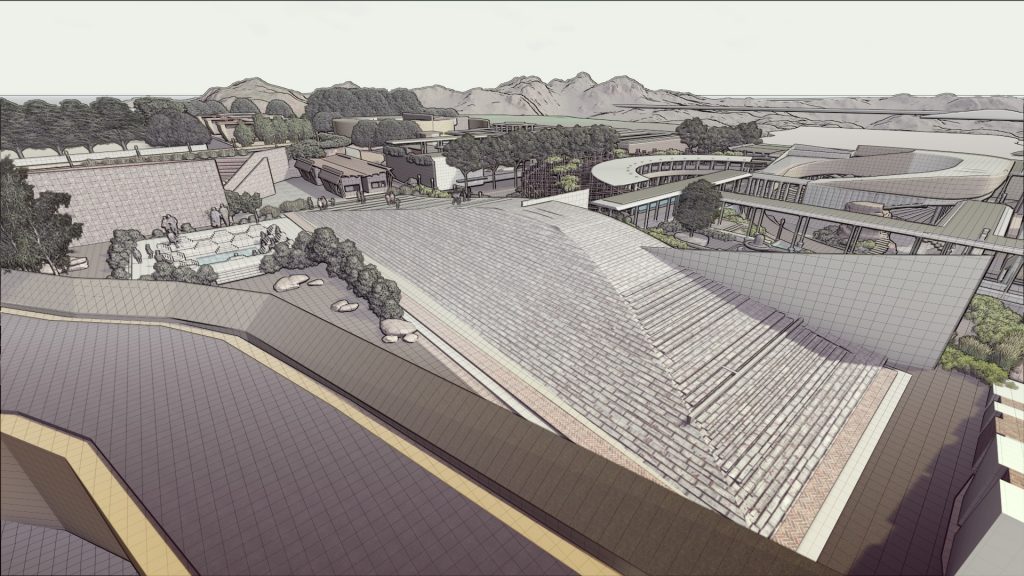PRESERVATION WITHOUT RESTORATION
DESIGN WITH LIMITATIONS
REJUVENATION OF PAST STRUCTURE WITH
THE PRESENT CONTEXT
Communication of historic remains to the public can be done architecturally in various ways. Giving the vast experience of the past ruins in a smaller scale which is the best method to conserve the heritage rather than restoration.
ABSTRACT
The ruins are often an overlooked topic in historic preservation. The typical method of treatment is either full restoration or demolition. However, some ruins have gained significance in their own right and this thesis explores appropriate treatment and recognition for these structures. The aesthetics of ruins are often
Communication of historic remains to the public can be done architecturally in various ways. Giving the vast experience of the past ruins in a smaller scale which is the best method to conserve the heritage rather than restoration. ABSTRACT The ruins are often an overlooked topic in historic preservation. The typical method of treatment is either full restoration or demolition. However, some ruins have gained significance in their own right and this thesis explores appropriate treatment and recognition for these structures. The aesthetics of ruins are often much admired and become the primary reason for local and even national interest in the site. Especially significant ruins can be stabilized to preserve them for future generations, though this changes the use of the site. Other ruins may be left to further deteriorate where appropriate, provided public safety is ensured. Connecting the context of the site,the design includes space for the rural development around the archaeological site which also welcomes the tourist, highlighting the value of the place and creating a non- profitable organization.The design is developed by providing relationship with the people by providing maximum interaction . There are restrictions for developing an archaeological site. People are normally isolated from this type of context. The design involves in bringing up the connectivity with the living and the dead ruins. Architecture is not only about a dwelling place instead it could be just an enclosure of stable or unstable structures creating aesthetically pleasing forms. AIM: • Understanding the problems faced in an archaeological site and solving it by design intervention. • To connect the geology of the ruins to the built architecture • To communicate the story of the past into life • Challenge is to not break the importance of the site • The spaces to depict the past connecting the natural light to direct the paths of the present. • To provide different means of communication to enhance the understanding of the heritage. • To build in the visitor, intellectual and emotional connection to heritage • To give a connection between the functional context and the dead ruins. • To give an experience of a village life of an archeologically based context. • To bring in a human unity by interacting with the visitors. • To improve the quality of life with the skilled activities. • To develop the rural life’s catering for all the age groups. • To provide a unique design quality of schooling for the poorest people. OBJECTIVES: • To bring in a change in people’s perspective in developing an archaeological context. • To bring a successful architecturally pleasing design with the restrictions and standards for building around an archaeological site • To be an income generator for the poor people. • To provide maximum interaction space • To conserve heritage by showcasing the activities of rural life for the visitors. • To use this as a module for developing the rural lives on a heritage site. • To prevent poverty. • To design with cost effective techniques. • To become a self -sufficient organisation. SCOPE: • People seldom appreciate the charm and beauty of an empty space so there should be a place where people could experience the past through the design elements. • Places that were left to the Gods or broken forms of ancient halls given up to the changes of the climate assume a splendour all of their own. • At archeological sites, the land excavated would not always be accessed by tourists(visitors) because of less attraction to the space. • There are ruins which are left unnoticed. • Shortage of space due to excavation highlights the need of various activities within a single site. • To provide a life to the dead structures. • This project helps the people to be independent and freedom to interpret individually. • Care for the forgotten people • Non- governmental organisation NEED FOR THE PROJECT: • To appreciate the unnoticed broken forms at archeological sites • To be used as a space with multiple activities for the betterment of rural living • To give a different kind of village life experience to the localites. • For rural development , all age groups are to be considered • Understanding the activities of all age groups makes it need for the project. • To encourage the people by providing revenue to the society. • To prevent migration • To provide quality life for the people • To provide quality of calmness to the place





